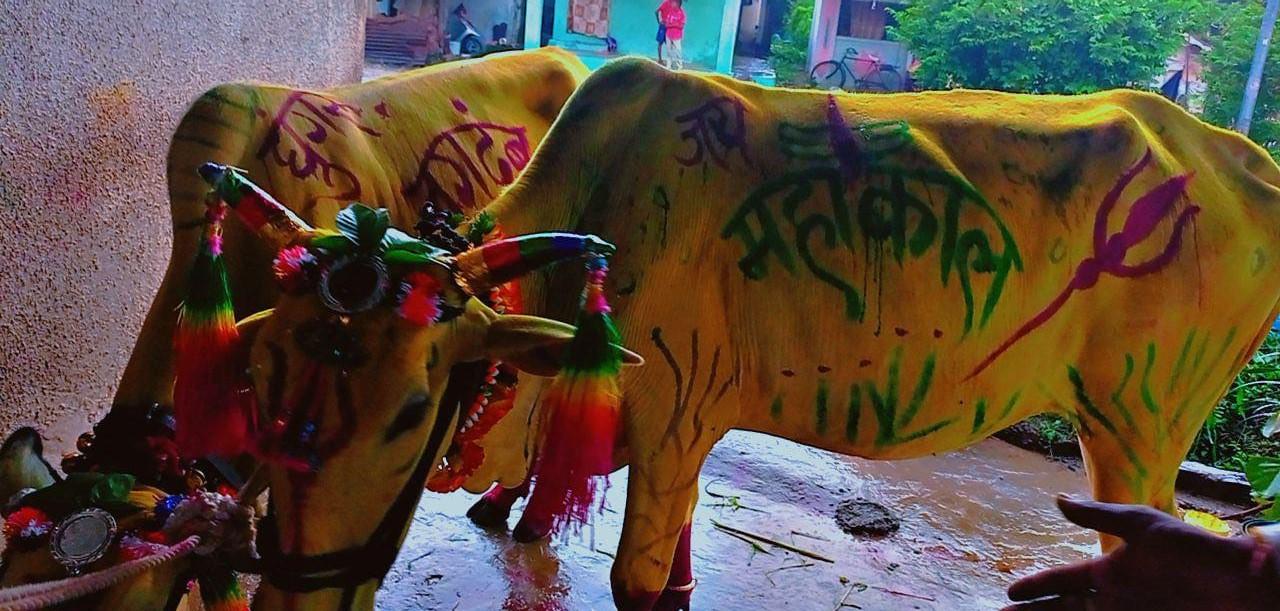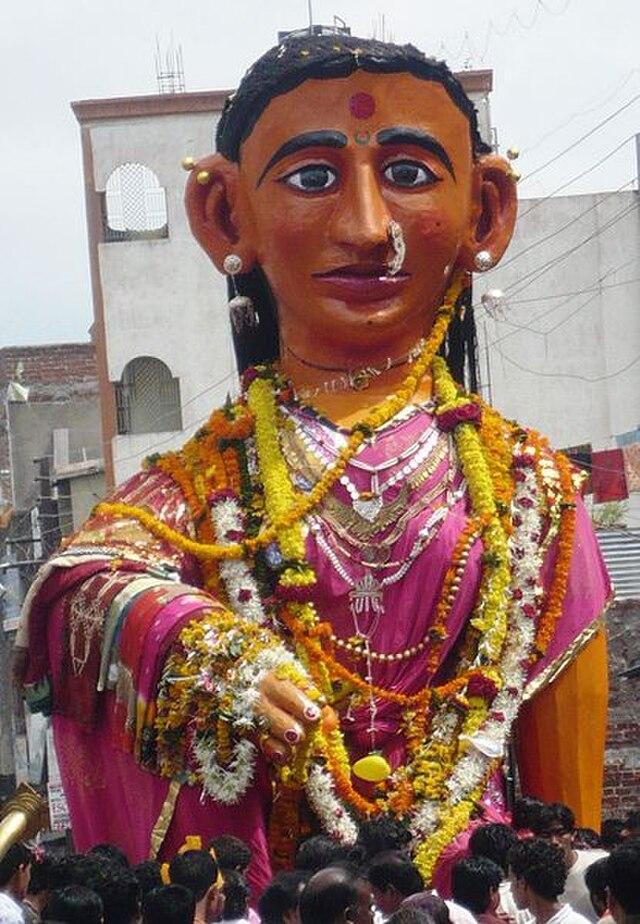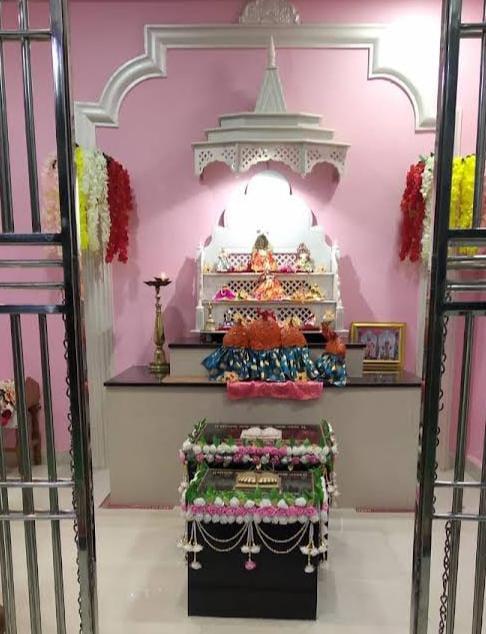BHANDARA
Festivals & Fairs
Last updated on 21 July 2025. Help us improve the information on this page by clicking on suggest edits or writing to us.
Bhandara reflects Maharashtra’s vibrant cultural spirit through a range of fairs and festivals celebrated across the district. These occasions often bring together religious devotion, seasonal cycles, and community participation, shaping the district’s cultural identity. Prominent festivals like Ganesh Chaturthi, Diwali, Holi, Gudi Padwa, Ashadi Ekadashi, Akshay Tritiya, Navratri, Dussehra, Mahashivratri, Shivaji Jayanti, Makar Sankranti, Nag Panchami, and Vat Purnima are widely observed. However, the district is especially known for the Das Navami, Shrihari Balaji Maharaj Yatra, and Bahirangeshwar Mandir Jatra, among others, which highlight its local traditions and historical connections. Together, these celebrations offer insight into the district’s social fabric and collective rhythms of life.
Pola

Pola is an important festival celebrated in the Bhandara district, particularly among farmers. It occurs on Pithori Amavasya, the new moon day in the month of Shravana. This festival honors bulls and oxen for their vital contributions to agriculture and farming. On this day, families prepare special dishes such as pooran poli and mixed dal vada as offerings, known as ‘naivedya.’
A distinctive tradition during Pola involves placing ‘palas’ steam at the entrance of homes, believed to act as a protective gatekeeper against diseases. The day after Pola is celebrated as Marbat Mirvanuk, where a sculpture called ‘Marbat’ is created using various medicinal plant stems, including Kadunim. This Marbat is then set on fire, with the smoke thought to purify the air and eliminate the unpleasant odors that can follow the rains. As the Marbat is paraded through the city, a common saying resonates: “Ida Pida Gheun Ja Ge Marbat,” which means “Take away all the troubles and diseases, O Marbat.” This reflects the belief in the Marbat's power to remove troubles and ailments from people's lives.

Dussehra
Dussehra, one of Hinduism’s most significant festivals, marks the beginning of Sharad Navratri and celebrates the victory of good over evil. It commemorates Bhagwan Ram’s triumph over the rakshasa king Ravan. Across India, the festival is celebrated with vibrant processions, enactments of the Ramayana, and the burning of Ravan effigies.
In Bhandara, Dussehra takes on a distinctive character through the Patang Utsav (Kite Festival), which unfolds alongside the traditional Ravan Dahan. On this day, the skies above the district are filled with colorful kites of all shapes and sizes, creating a striking visual spectacle that complements the festive spirit. Families and children gather on terraces and open fields, competing to keep their kites soaring the longest. This unique blend of religious devotion and playful community participation gives Dussehra in Bhandara a lively, inclusive atmosphere that stands apart from the more conventional celebrations elsewhere in Maharashtra.
Das Navami
Das Navami is a significant festival in Bhandara, celebrated in honor of Shri Samarth Ramdas Swami, the revered 17th-century sant and spiritual guide known for his teachings on devotion, discipline, and dharma. Spanning nine days, the festival reflects the district’s deep-rooted spiritual traditions and enduring reverence for the sant.
Shri Samarth Ramdas Swami had visited Bhandara for Dharma Prachar - the propagation of religious teachings - during his travels across Maharashtra. His influence in the region was profound, shaping the moral and devotional life of its people. In his honor, a Math (monastic establishment) was founded in Madhav Nagar, which houses his Paduka (footwear) and Jholi (bag), symbolizing his spiritual presence and blessings.
The festival of Das Navami is marked by a series of devotional programs, including bhajans, kirtans, and communal prayers. The highlight of the celebration is the Palkhi procession, during which the sacred Paduka of Shri Samarth Ramdas Swami is carried through the city in a beautifully decorated palkhi. Devotees line the streets to offer prayers, chant devotional hymns, and accompany the procession with music and traditional instruments. The event embodies Bhandara’s collective devotion and the continuing legacy of Shri Samarth Ramdas Swami’s teachings.

Makar Sankranti
Makar Sankranti, celebrated across India as a harvest festival marking the Sun’s transition into Capricorn, takes on a distinctive charm in Bhandara. The skies come alive with vibrant colors during the Patang Utsav (Kite Festival), as people of all ages gather on rooftops and open fields, their laughter mingling with the fluttering of kites soaring high.
A central part of the celebration is the sharing of Tilgul - sweet balls made of sesame seeds and jaggery - symbolizing warmth, unity, and goodwill. The familiar phrase “Tilgul ghya, god god bola” (Take Tilgul and speak sweetly) echoes through homes, reinforcing the spirit of harmony and kindness.
Another custom unique to Bhandara is the Haldi-Kumkum ceremony, observed by women from Makar Sankranti till Rathasapthami. Married women visit each other’s homes, applying haldi (turmeric) and kumkum (vermilion) on the forehead as a gesture of respect and solidarity. The ceremony fosters social connection and community bonding among women.
Bahirangeshwar Mandir Jatra
The Bahirangeshwar Mandir, located near Dhauli Hill on the eastern bank of the Daya River, hosts a major puja and jatra on Mahashivratri to honor the gram devta, Bahirangeshwar. Locals recount the story of a devout woman, known as the gaulan, who visited Kham Talao daily to perform puja of the Shiv Pind. Despite facing troubles from her in-laws, she remained steadfast in her devotion to Bhagwan Shiv. One day, in despair, she prayed to him to take her away. Moved by her devotion, the Shiv Pind broke open, and she leapt into it. The celebrations also feature religious rituals, cultural performances, and bustling local markets. A distinctive tradition of these fairs is the purchase of math or madaka, a ritual unique to Bhandara district and considered especially auspicious during this time.
Ghodyachi Yatra
During Ramnavami, Ghodyachi Yatra (horse yatra) takes place at Adyal village. This yatra is also known as Shrihari Balaji Maharaj Yatra resembling a yatra held in Jagannath Puri. This yatra has 150 years of tradition in which a wooden murti of Srihari Balaji Maharaj is carried on a wooden horse to complete its journey through the villages followed by a huge jatra. The journey starts at midnight on Ram Navami and continues till Hanuman Jayanti. A large number of people from Madhya Pradesh, Chhattisgarh and Maharashtra participate to witness the procession, which starts from the Swayambhu Hanuman Mandir in Adyal village. It halts above the “market ground” after going through the whole village and remains there for public view for a week i.e. from Ram Navami till Hanuman Jayanti.
![A scene from Ghodyachi Yatra in Adyal[1]](/media/culture/images/maharashtra/bhandara/festivals-fairs/a-scene-from-ghodyachi-yatra-in-adya_oL6aqw6.png)
Last updated on 21 July 2025. Help us improve the information on this page by clicking on suggest edits or writing to us.